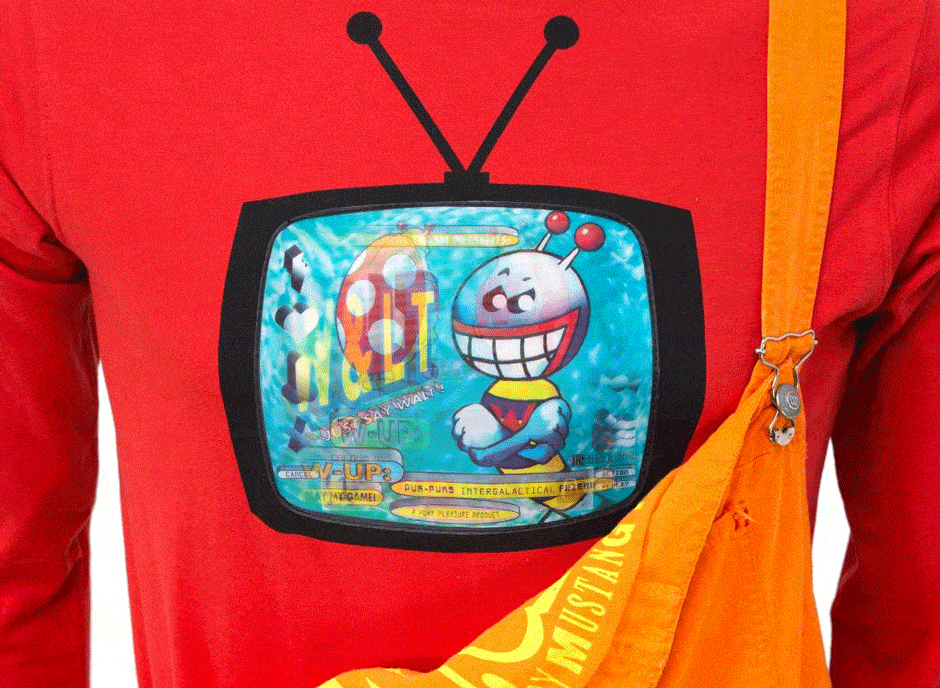The nature of the environment is much more on TV than on film or painting. In fact, TV (its random movement of tiny electrons) IS the environment of today.
Nam June Paik1
[Paik] experimented with television sets as art objects and filled them with goldfish or candles, stacked and scattered them to create large-scale spirals, towers or environments, and incorporated them in garments and musical instruments. Alternately, he would use the television medium as art by distorting it with colorizing, video feedback, magnetic scan modulation, and non-linear mixing to generate a unique style of imagery.2
The artist’s iconic Global groove video of 1973 is a forward-looking, utopian work, as its opening sequence states: ‘This is a glimpse of a new world when you will be able to switch on every TV channel in the world and TV guides will be as thick as the Manhattan telephone book’. Counter to the one-sided nature of commercial television broadcasting, Global groove is about exchange and discussion and, at its heart, is an invitation for a global television party. It does not follow any predetermined narrative structure, rather the content cuts and pastes from new and existing video works. The content is visually augmented in psychedelic fashion and global in scope, mixing together footage of dancers (burlesque, tap and Nigerian ceremonial, among others) with footage of Paik’s artistic collaborators, such as John Cage, Allen Ginsberg, Merce Cunningham and Charlotte Moorman, and appropriated footage, including public news broadcasts of President Nixon and Coke commercials. Although many of Paik’s hopes and visions for the uses of television have come to pass in a technical sense, they have perhaps not, as Dieter Daniels has argued, achieved his political aim for it, in terms of free-to-air television broadcasting; although, arguably, the user-generated content on internet platforms such as YouTube allow for such accessibility on a global scale.3 With Global groove Paik proposed a global exchange of television programs:
If we could assemble a weekly television festival comprised of music and dance from every nation and disseminate it freely via the proposed Video Common Market to the world, its effects on education and entertainment would be phenomenal.4
In 1979 (my postgraduate year at Phillip Institute) I completed the TV figures: a comment on the empty-headed (vacuum tubes) programs on TV, like soaps, reality TV , game shows, etc. … In my mind, there is something quite humorous about the TV sculptures … They seemed to have a life of their own, yet they were alien. It concerns me that most television content is now saturated with American and British content, Australian shows don’t seem to get much of a go … Today there are a lot more choices: with cable TV, satellite, the internet and many more free-to-air channels. It seems that all of these are presentable in high-resolution, 3D and on smaller and more mobile devices. The prevalence of screens has been a big part of my life and will seemingly be an even bigger part of life for billions of others worldwide as the postmodern era progresses.5

I’m always reflecting the time and moment I’m living in while working on the collections. And that moment, the nineties, was an incredible time regarding new technologies: first websites, first CD-ROMs, first video games, the boom in techno music, dressing up for raves, and ‘new’ gender and beauty possibilities.6
- Nam June Paik quoted in Bruce Kurtz, ‘Video is being invented’, Arts Magazine, Dec.–Jan. 1973, p. 37.
- Kanitra Fletcher, ‘Global groove, 1973’, Landmarks, <http://landmarks.utexas.edu/video-art/nam-june-paik-and-john-godfrey>, accessed 20 April 2015.
- Dieter Daniels, ‘Television – art or anti-art? Conflict and cooperation between the avant-garde and the mass media in the 1960s and 1970s’, trans. Michael Robinson, Media Art Net <http://www.medienkunstnetz.de/themes/overview_of_media_art/massmedia/scroll/>, accessed 20 April 2015
- Nam June Paik, ‘Global groove und der gemeinsame Videomarkt’, in Edith Decker (ed.), Nam June Paik, Niederschriften eines Kulturnomaden, DuMont Buchverlag, Cologne, 1992, p. 132, quoted in Daniels.
- Arthur Hibbert, email to the author, 9 April 2015.
- Walter van Beirendonck quoted in Eloise Moran, ‘Kiss the future: Walter van Beirendonck on Wild & Lethal Trash’, 21 Feb. 2014, Opening Ceremony, <http://www.openingceremony.us/entry.asp?pid=9202>, accessed 20 April 2015.
